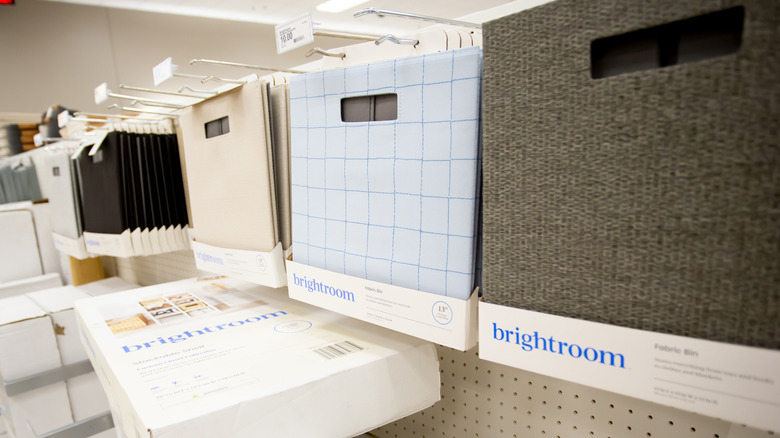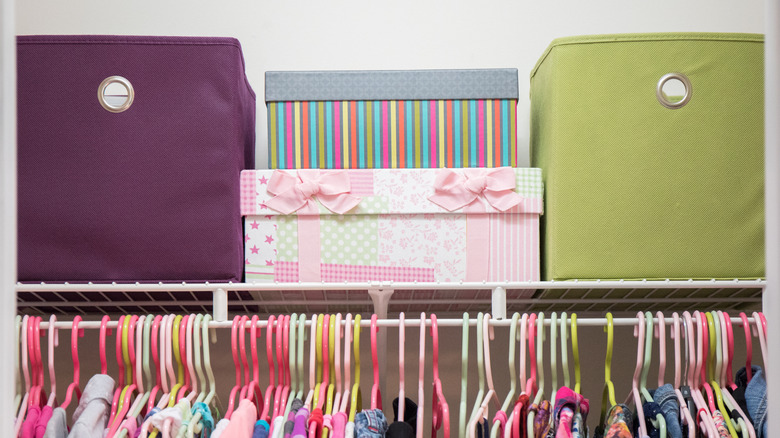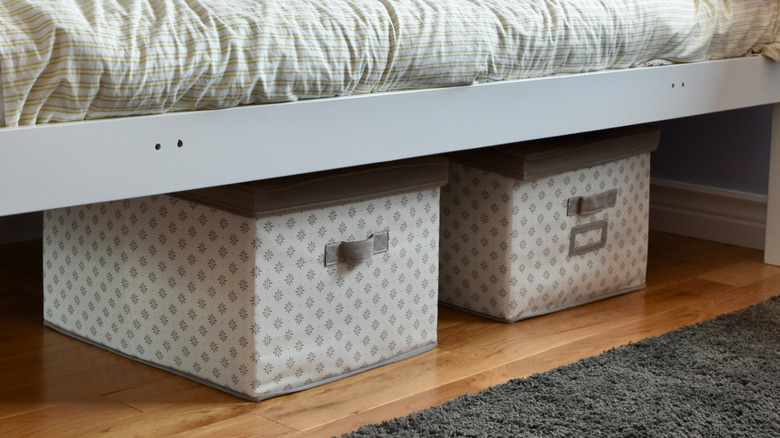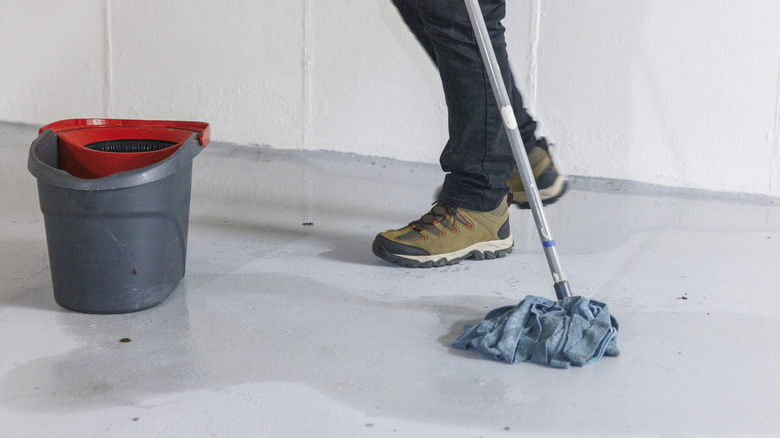Downsides Of Fabric Collapsible Bins To Consider When Choosing Storage Solutions
We may receive a commission on purchases made from links.
Storage boxes are often a household essential. They make a big difference throughout your home when you need to store something in a pinch or organize a space. With such a wide range of options for sale, choosing the right container for your needs can feel overwhelming. A single online search or trip to the store offers bins of various colors, shapes, sizes, and materials. While plastic storage totes are a popular choice for many homes, collapsible fabric options can be cheaper and are often more decorative to complement your home. They are able to collapse, saving space when not in use. Available in a range of colors and patterns, they're typically used in closets, under beds, and on shelves to house a diverse selection of things, from books to accessories to clothing and sports equipment. Before making a purchase, however, you might want to think twice before considering fabric bins for home storage. This is because they're typically not as durable or secure as other options and can be susceptible to water damage.
The same qualities that make these storage options appealing can also be limiting if you aren't intentional about how you use them in your home. The fact they collapse means they're great for pop-up storage when you need them, but they can lack the reliability of other options. Using them carelessly might leave you disappointed with their longevity and performance, or worse, you may end up damaging the contents. Here's what to keep in mind when deciding if you should use collapsible bins.
These bins aren't as durable as other options
First, fabric collapsible bins aren't scoring as many durability points as other storage options. Because these bins are collapsible, they are naturally flimsier than their plastic or metal counterparts. While they are often made to fold flat for storage when not in use, this same flexibility may be a drawback when you use them for everyday items. This doesn't mean you have to stop using them altogether. They just require more consideration as to what you put inside, especially with regards to weight, shape, and size. Using them to contain heavy objects like regular hardback books, dishes, tools, and other household goods isn't recommended. Fabric bins can break at the seams or bow from too much pressure. If you're buying bins new, pay attention to any listed weight limits before use.
Storing bulky or awkward items within these bins could also distort their structure, making them harder to fit and remove in cramped spaces. Overstuffed bins also look less attractive, especially if they are being used within any open cube or shelving system. If using collapsible bins to creatively add storage in your kids' room or anywhere else in the home, stick to small, less hefty items, such as small children's books, soft toys, babies' board books, and action figures. Keeping a lighter load will make your bins less susceptible to damage and extend their longevity.
Collapsible bins don't offer good security
Security is another important factor to remember when using fabric collapsible bins for storage. Though there are exceptions, many of these options don't feature lids or a way to fasten them shut, leaving your contents exposed. Even if they do have a lid, they're typically flimsy. This can be inconvenient for you, but this also makes it easy for anyone to get into the contents, whether it's your family, kids, or guests in your home. The lack of privacy could also be a concern, especially if stored within any shared spaces such as dorm rooms or anywhere with communal living.
If you view security as a priority, you'll want to avoid using fabric bins to store anything that you wouldn't want anyone to easily access. That includes important financial documents, notes, legal paperwork, or anything with identifying or sensitive information, such as medical records or tax forms. These items are better stored in a lidded large plastic tote or another container with a lock. A more secure option prevents someone from tipping over the bin to rifle through the contents or even cutting through the fabric. Fabric bins are also flammable and there are more secure options for important documents.
Fabric bins can invite mold and mildew
Lastly, fabric collapsible storage bins can be particularly vulnerable to moisture, which may limit where they can be used around your home. These limitations apply to areas prone to dampness such as basements, bathrooms, sink cabinets, or laundry rooms. It's also smart to avoid putting collapsible bins in any areas with poor ventilation, including spaces like garages and attics. With a lack of decent airflow, moisture may quickly build up from humidity, creating the ideal conditions for mildew and mold formation. Moisture exposure means you risk not only ruining the bins themselves but also the contents inside. Wet or damp fabric may smell musty or look discolored. Many of these fabric boxes feature both a fabric-covered cardboard interior as well as an insert that helps keep their rigid shape. Cardboard will break down quickly when wet, weakening the bin's structural integrity. As a result, the bin might be unsalvageable, and you'll have to throw it out.
When looking for storage options to use in damp areas or those spaces with high humidity, a fabric bin isn't a reliable choice. You can opt for a better alternative, such as a container with a seal-tight lid for more lasting protection. Look for options with a gasket seal that promises waterproofing or moisture-resistance, such as the Sterilite 4-Pack Gasket Box, Weather-Resistant Storage Bins with Latching Lids. These totes are more favorable to these conditions and offer better reliability in the case of an accident. If there's an unexpected leak or other wet conditions, you can quickly clean the mold that forms with vinegar, baking soda, and other natural ingredients.



